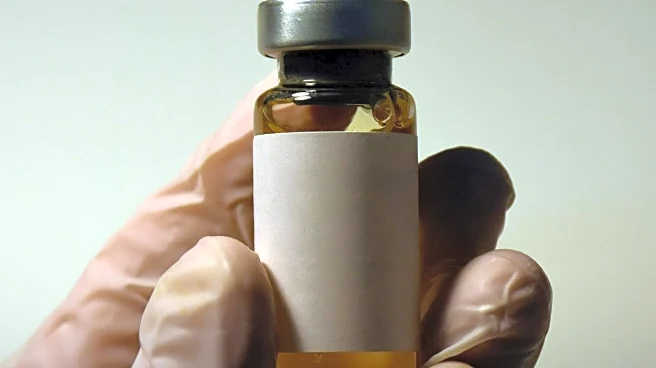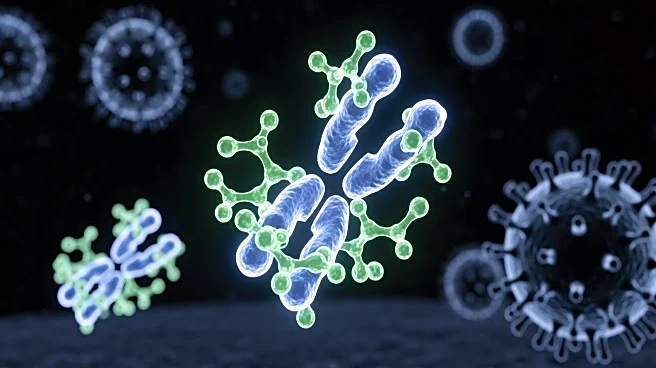What's Happening?
Researchers at Chiba University have developed a promising intranasal nanogel vaccine aimed at treating cervical cancer caused by human papillomavirus (HPV). The vaccine, detailed in a study published
in Science Translational Medicine, utilizes cationic cholesteryl-group-bearing nanogels to deliver HPV antigens directly to the nasal mucosa, activating local immune responses and slowing tumor growth in animal models. The vaccine targets the E7 oncoprotein produced by HPV16, a common high-risk strain, and has shown efficacy in both mice and macaques, inducing strong immune responses in cervical tissue.
Why It's Important?
Cervical cancer is a major health concern worldwide, particularly in low- and middle-income countries where access to HPV vaccination and treatment is limited. Current treatments like surgery and chemotherapy can be invasive and compromise fertility, highlighting the need for alternative therapies. The development of a non-invasive nasal vaccine offers a potential breakthrough in cervical cancer treatment, preserving fertility and improving quality of life for patients. This approach could reshape the landscape of cervical cancer treatment by providing a therapeutic option that goes beyond prevention.
What's Next?
Further clinical testing is essential to confirm the vaccine's efficacy and safety in humans. If successful, this nasal vaccine could become a non-surgical alternative to conventional treatments, potentially extending its application to recurrence prevention and chronic disease management. The research team aims to explore the vaccine's ability to stimulate mucosal immunity in the reproductive tract, which could lead to broader applications in immunotherapy.
Beyond the Headlines
The study underscores the potential of nanogel-based vaccines to activate local immune responses, offering a new category of non-invasive treatment. This approach could be extended to other HPV-driven cancers and chronic diseases, providing patients with safer and more accessible options. The findings highlight the importance of developing therapeutic strategies that address the unmet medical need for treating existing HPV infections and associated cancers.











